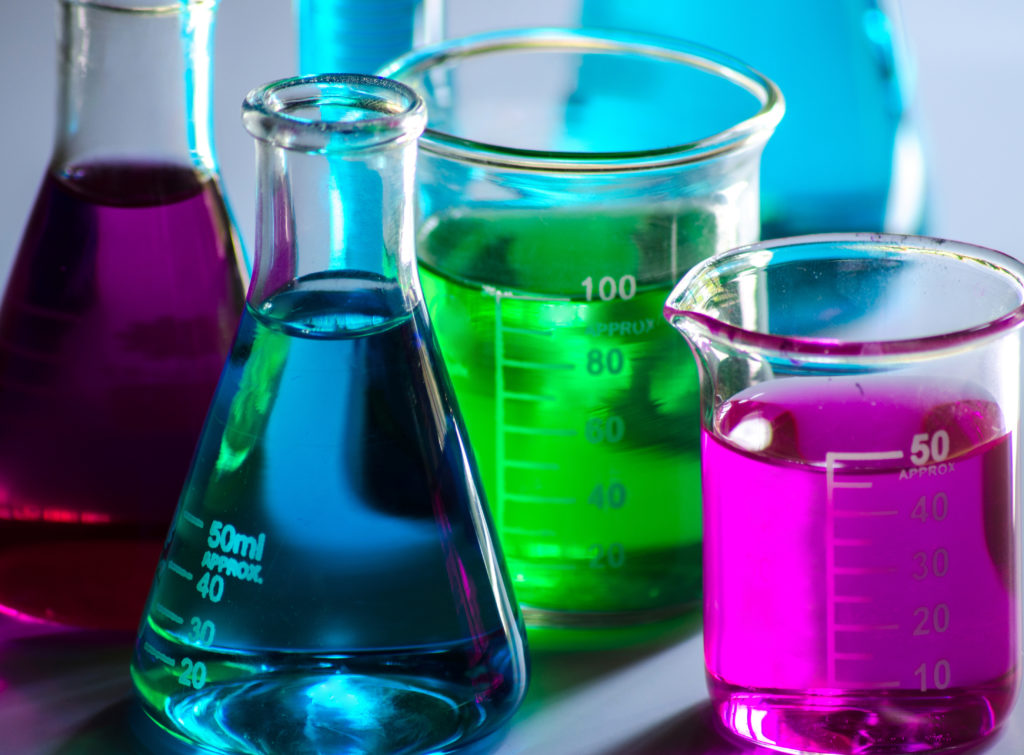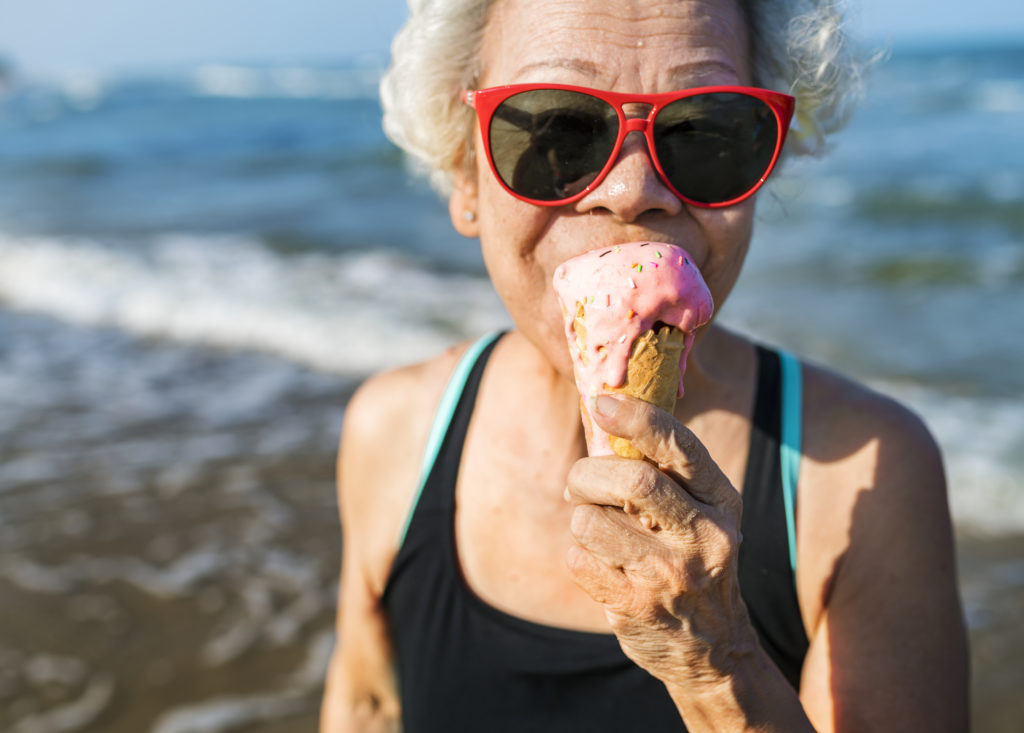Is there a more satisfying food on a hot summer day than ice cream? The pleasantly cold, creamy, and velvety smooth mouthfeel of an ice cream cone or a bowl piled high with two or more scoops of our favorite flavors is pure joy. Oh! Yum, yum, yum. Hopefully, many of you can identify with this great pastime. Though it may fade from memory as winter approaches, it returns with an addictive vengeance when the hot summer temperatures hit the 80s and higher. Are you an ice cream lover? I certainly am!
Today was one of those hot days, and as I spooned out my vanilla ice cream for breakfast—yes, breakfast! (smile)—and smothered it with carob sauce (recipes below), it occurred to me that many of us unknowingly consume fake, toxic ice cream. Yes, ice cream can be toxic and very bad for your heath. If this makes you incredulous, please stay with me and let me explain.
How I Learned About Real Ice Cream
Many moons ago I, too, was consuming toxic ice cream. But after joining the Weston A. Price Foundation back in 2003, I purchased an out-of-the-ordinary and inspiring cookbook, Nourishing Traditions. That’s when I learned just how toxic many of our favorite ice cream brands are and realized they aren’t even real ice cream. Yes, my dear reader, these fake ice creams contain ingredients that will make your nails curl. Consumers mostly buy them for the low prices, especially larger families where children may be getting a dose of poison in every bite. How very sad!
The Unhealthy Ingredients in Fake Ice Cream
Maureen Diaz, a Weston A. Price Foundation chapter leader, warns us about some of the toxic ingredients in fake ice cream in this article (which also discusses what nutrient dense foods are all about). Here’s a quote about the poisonous ingredients in most brands of store-bought ice cream:
“Most people have come to expect cake from a box (at best) or the typical, overly sweet birthday cake purchased from the local grocery store bakery, smothered in brightly colored icing made with shortening, sugar and neurotoxin food coloring. People top that off with ice cream containing the same fake colors and flavors, along with high fructose corn syrup and even antifreeze (propylene glycol), which is a standard ingredient in nearly all commercial ice creams. Although some might say, ‘If the U.S. Food and Drug Administration says it’s safe for us to ingest, who are we to question it?’ But this is not okay! So what is a concerned parent to do?”
Personal comment: Concerned parents should consider buying real ice cream or making their own as I discuss below. Also, please take the time to read about antifreeze (propylene glycol), which Diaz mentions in her article. It too will curl you nails. She explains that the FDA says this stuff is safe for us to ingest, and who are we to question the FDA? People who think for themselves, that’s who! I for one don’t want antifreeze in my body.
Other Chemicals Used in Making Commercial Ice Cream
But that’s not all. Nourishing Traditions outlines even more chemicals in ice cream. (This list was also published by the Price-Pottenger Journal of Health and Healing, which I recommend, though access to their articles is behind a paywall.)
Personal note: Be advised that not all labels explicitly list these chemicals.
- Diethyglycol: A cheap chemical used as an emulsifier instead of eggs, this is the same chemical used in antifreeze and in paint removers.
- Piperonal: Used in place of vanilla. This chemical is used to kill lice.
- Aldehyde-C17: Used to flavor cherry ice cream. It is an in flammable liquid also used in aniline dyes, plastic, and rubber.
- Ethyl acetate: Used to give ices cream a pineapple flavor—and as a cleaner for leather and textiles. Its vapors have been known to cause chronic lung, liver, and hearing damage.
- Butyraldehyde: Used in nut flavored ice cream. It is one of the ingredients of rubber cement.
- Amylacetate: Used for its strawberry flavor. It is a nitrate solvent.
As Diaz says in her article, “The next time you are tempted by a luscious looking banana split sundae made with commercial ice cream, think of it as a mixture of antifreeze, oil paint, nitrate solvent, and lice killer. You won’t find it so appetizing.”
Thank Goodness for the Weston A. Price Foundation Shopping Guide
By all means, go and purchase this very inexpensive booklet (or order the phone app) right now. It’s a great resource that lists good choices for ice cream as well as myriad other foods and beverages.
The shopping guide is updated every year, with the revised guide usually available by January 1. The brands below are therefore subject to change as some new ones are added and others removed. If you’re a WAPF member, you’ll be sent an updated guide each year as part of your membership fee.
2019 Ice Cream Recommendations
Best: Homemade ice cream (except chocolate and those with natural flavors) made with cream from grass-fed animals (preferably raw), egg yolks, real vanilla, and natural sweeteners.
If you can’t make homemade, the following brands of raw ice cream are also listed under the “Best” rating in the guide:
Meadow Ridge Farm raw ice cream (717-530-5999)
Miller’s Biodiversity Farm raw ice cream (717-786-7895)
Miller’s Organic Farm raw cow and water buffalo ice creams (717-556-0672)
Pleasant Pastures raw ice cream (717-768-3437)
Rocky Ridge Dairy raw ice cream (717-284-0466)
Willow Run Dairy raw ice cream (717-556-0285)
Good: Simple but not natural flavors (such as vanilla or pistachio) of commercial ice cream made with rBGH hormone-free milk, cream, egg yolks, and real vanilla. (Note: unfortunately, all commercial ice cream is made with homogenized cream and milk.)
Alden’s organic ice cream
Ben & Jerry’s vanilla ice cream
Ciao Bella vanilla gelato and coconut sorbetto (800-343-5286)
Figo! vanilla trio gelato (303-494-0366, ext. 1)
Julie’s organic vanilla ice cream, simply vanilla coconut ice cream
Kirkland Super Premium vanilla ice cream
Reed’s original ginger ice cream
Steve’s Ice Cream vanilla crème fraiche ice cream (718-412-9393)
Talenti vanilla and coconut gelatos (214-526-3600)
Trader Joe’s Super Premium French Vanilla ice cream
Avoid: All commercial ice cream brands contain a form of antifreeze called propylene glycol, which is not listed on the labels. Commercial ice cream brands should only be eaten in very moderate amounts. Avoid ice cream made without cream and those containing extenders, soy products, powdered milk, powdered egg yolks, agave, artificial or natural flavors, vanilla flavor, chocolate, cocoa, cacao, or additives.
Making Your Own Ice Cream
Before we get to a few of my favorite recipes, I’d like to share some information about homemade ice cream from Maureen Diaz:
“Not everyone has an ice cream maker, but it is quite easy to make a perfectly acceptable homemade ice cream without one. A simple mixture of cream, honey or maple syrup, vanilla and egg yolk make a fine, French-vanilla-flavored treat. The addition of a little cream cheese helps ensure a smooth texture even when frozen. Occasional stirring while freezing ‘whips’ air into the final product, making it more like what comes out of a carton at the grocery store. With other options such as added organic fruit or nuts, one can create a wide variety of flavors sure to please even the fussiest of party-goers.”
Now here are some recipes that will help you junk the commercial stuff—or get the commercial versions from the recommendations in the WAPF Shopping Guide):
Vanilla Ice Cream
—Used with permission from Sally Fallon Morrel. Make sure to use the best quality cream you can find, preferably unpasteurized. Never use ultrapasteurized.
See Nourishing Traditions for Sally’s note about ice cream makers. Yields 1 quart.
Ingredients
3 egg yolks
½ cup maple syrup
1 tablespoon vanilla extract
1 tablespoon arrowroot
3 cups heavy cream, preferably raw (do not use ultrapasteurized cream)
Instructions
Beat egg yolks and blend in remaining ingredients. Pour into an ice cream maker and process according to instructions. For ease of serving, transfer ice cream to a shallow plastic container, cover, and store in freezer. Serve with Carob Sauce (recipe below) or Raspberry Sauce.
Carob Sauce
—Used with permission from Sally Fallon Morrell. Yields 2½ cups.
Ingredients
⅔ cup carob powder
½ cup butter
⅓ cup maple syrup
1 tablespoon vanilla extract
1 tablespoon chocolate extract (optional)
Pinch of salt
1 cup cream (not ultrapasteurized)
Ingredients
Place ingredients in the top half of a double boiler. Cook gently, stirring occasionally with a wooden spoon, until well amalgamated.
[xyz-ihs snippet=”Begin-Authors-Note”]Afterthoughts from the Traditional Cook
Life Is Like Ice Cream
Every experience is a flavor.
Every laugh, cry, hug, and kiss is a flavor.
There are of course toppings.
They may enrich or worsen the ice cream but do not mean much overall in the long run.
Every SnapChat, Instagram, and YouTube post. They are just toppings.
Will they matter? No. Unless we choose to care.
As time progresses, ice cream melts. As we age, death comes a little closer.
Ice cream has multiple flavors that can be mixed. Humans themselves can have a mixture of personality traits. We may have a cherry like personality or a more basic “vanilla” one.
What ice cream will you choose to be?
The one that is good but promptly becomes bad after two spoons or the one that will forever leave a feeling of goodness within your stomach?
—“Life Is Like Ice Cream” by Michael Navazhylau
Disclaimer from Maria Atwood, CNHP: I am a Certified Natural Health Professional, CNHP, not a medical doctor. I do not diagnose, prescribe for, treat, or claim to prevent, mitigate, or cure any human diseases. Please see your medical doctor or health practitioner prior to following any recommendations I make in my blog posts or on my website.
Images from iStock/CokaPoka (main), Tarek_khouzam (chemicals), Rawpixel (woman eating ice cream).






